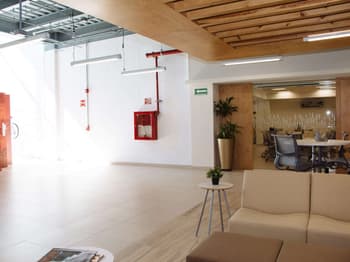Table of Contents
Many tenants are aware of their obligation to make good the premises at the end of their lease term. However, tenants may not know that a lease will often also contain a redecoration clause. While the make good clause may contain certain aspects of redecoration, the two clauses are distinct and often appear in separate sections of the lease. This article will set out the key differences between a redecoration clause and a make good clause.
Redecoration Clauses
The aim of a redecoration clause is for the landlord to ensure that your premises does not fall into disrepair too quickly and that it maintains a fresh looking appearance.
Redecoration will usually feature two characteristics:
- a time period or intervals for when the redecoration must take place; and
- the specific work that you will need to complete.
You will often need to complete redecoration after a set number of years of your lease.
The clause will also often include specific works that you need to complete to have fully redecorated your premises. This may include:
- repainting the walls; and
- fixing floors.
In general, redecoration should have far less extensive requirements than a make good clause. Redecoration clauses are particularly common in leases for stores in shopping centres where the landlord wishes to uphold a certain standard across all stores in the centre. It is also common for longer leases that either have multiple options or an initial long term.
Make Good Clauses
Unlike redecoration clauses, make good clauses concern an obligation that only arises at the end of the term or when the lease is terminated. The make good clause will frequently require you to either:
- remove detachable property;
- remove of all of your property and complete basic repairs for removal;
- return the premises to the state detailed in a condition report; or
- return the premises to its bare shell condition.
Returning the premises to its bare shell condition is the equivalent of returning the premises completely empty, with all fixtures and fittings stripped away. While this sometimes may have been the way the premises was provided, premises are also sometimes handed over with existing fittings and fixtures. If this is the case, if your lease requires you to return the premises to the condition it was when handed over, it will not need to be in bare shell condition.
For both options, making good will generally require you to remove your fit out from the premises and reinstate any parts of the premises that were damaged during the lease term. At this point, leases can vary quite significantly as to what else make good will entail. Some landlords may require nothing more than a clean premises, whereas others may require repainting and refinishing the floors.
Continue reading this article below the formCan I Negotiate These Clauses?
Both making good and redecorating a premises can be very costly. Make good causes are standard, and you cannot, generally, negotiate out of this responsibility. You can, however, negotiate the level of making good with your landlord to ensure that you can meet this obligation.
You may also be able to discuss changing your redecoration obligations if you do not think that you can meet the requirements.
Key Takeaways
Make good clauses are standard in most leases and will specify how you must leave the premises at the end of your lease. In contrast, redecoration clauses concern the time intervals during your lease where you must upkeep the premises. The extent of both obligations will vary depending on the lease. If you are unsure as to your redecoration and make good obligations, contact LegalVision’s leasing lawyers on 1300 544 755 or fill out the form on this page.
We appreciate your feedback – your submission has been successfully received.











